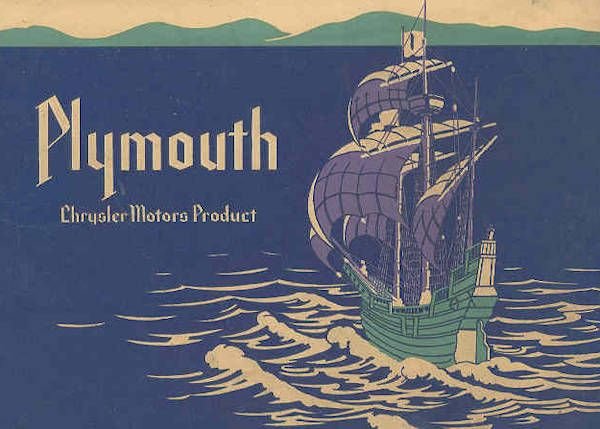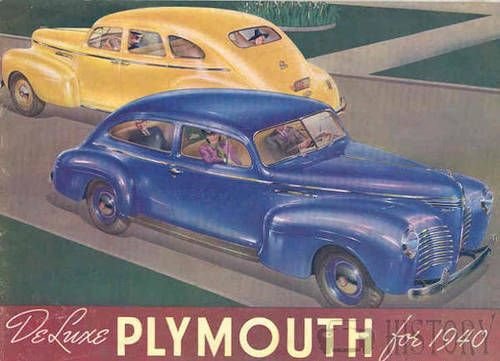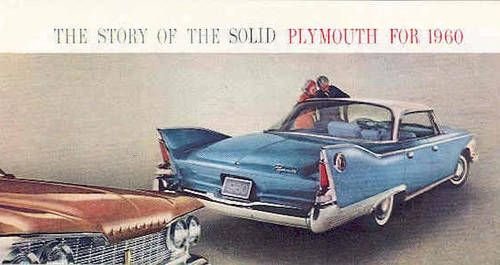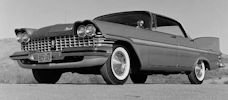Plymouth car history
 | |
| Industry | Automobile |
|---|---|
| Fate | Withdrawn from market (2001); models discontinued or rebranded as Chrysler |
| Founded | July 7, 1928 |
| Defunct | June 29, 2001 |
| Headquarters | Auburn Hills, Michigan United States |
| Products | Cars, Minivans |
| Parent | Chrysler (1928-1998) DaimlerChrysler (1998-2001) |
Plymouth was a marque of automobiles based in the United States, produced by the Chrysler Corporation and its successor DaimlerChrysler. Production was discontinued on June 29, 2001 in the United States.
History
The Plymouth automobile was introduced on July 7, 1928. It was Chrysler Corporation's first entry in the low-priced field, which at the time was already dominated by Chevrolet and Ford. Plymouths were actually priced slightly higher than their competition, but offered all standard features such as internal expanding hydraulic brakes that the competition did not provide. Plymouths were originally sold exclusively through Chrysler dealerships. The logo featured a rear view of the ship Mayflower which landed at Plymouth Rock. However, the Plymouth brand name came from Plymouth Binder Twine, chosen by Joe Frazer for its popularity among farmers.(Plymouth Binder Twine was a common household item that was used to tie up various items.)
The origins of Plymouth can be traced back to the Maxwell automobile. When Walter P. Chrysler took over control of the troubled Maxwell-Chalmers car company in the early 1920s, he inherited the Maxwell as part of the package. After he used the company's facilities to help create and launch the Chrysler car in 1924, he decided to create a lower-priced companion car. So for 1926 the Maxwell was reworked and re-badged as the low-end Chrysler "52" model. In 1928, the "52" was once again redesigned to create the Chrysler-Plymouth Model Q. The "Chrysler" portion of the nameplate was dropped with the introduction of the Plymouth Model U in 1929.
Great Depression, 1940s and 1950s

While the original purpose of the Plymouth was to serve a lower-end marketing niche, during the Great Depression of the 1930s, the marque helped significantly in ensuring the survival of the Chrysler Corporation in a decade when many other car companies failed. Beginning in 1930, Plymouths were sold by all three Chrysler divisions (Chrysler, DeSoto, and Dodge). Plymouth sales were a bright spot during this dismal automotive period, and by 1931 Plymouth rose to the number three spot among all cars. In 1931 with the Model PA, the company introduced floating power and boasted, "The economy of a four; the smoothness of a six." In 1933 Chrysler decided to catch up with Ford and Chevrolet with respect to engine cylinder count. The 190 cu in version of Chrysler's flathead-6 engine was equipped with a downdraft carburetor and installed in the new 1933 Plymouth PC, introduced on 17 November 1932. However, Chrysler had reduced the PC's wheelbase from 112 in (284.5 cm) to 107 in (271.8 cm), and the car sold poorly. By April 1933, the Dodge division's Model DP chassis, with a 112 in (284.5 cm) wheelbase, was put under the PC body with DP front fenders, hood, and radiator shell. The model designation was advanced to PD and the car was marketed as the "DeLuxe" 1933 Plymouth. This car sold very well and is the 1933 model most commonly found in collections. The PC became the 'Standard Six'. It had been the 'Plymouth Six' at introduction, and was sold through to the end of 1933, but in much lower numbers. It is consequently in the minority in collectors' hands today. In 1937, Plymouth (along with the other Chrysler makes) added safety features such as flat dash boards with recessed controls and the back of the front seat padded for the rear seat occupants. The PC was shipped overseas to Sweden, Denmark, and the UK, as well as Australia. In the UK it was sold as a 'Chrysler Kew', Kew Gardens being the location of the Chrysler factory outside London. The flathead 6 which started with the 1933 Model PC stayed in the Plymouth until the 1959 models.
In 1939 Plymouth produced 417,528 vehicles, of which 5,967 were two-door convertible coupes with rumble seats. The 1939 convertible coupe was prominently featured at Chrysler's exhibit at the 1939 New York World's Fair, advertised as the first mass-production convertible with a power folding top. It featured a 201 cu in, 82 hp version of the flathead six engine.
For much of its life, Plymouth was one of the top-selling American automobile brands; it together with Chevrolet and Ford were commonly referred to as the "low-priced three" marques in the American market. Plymouth almost surpassed Ford in 1940 and 1941 as the second most popular make of automobiles in the U.S. Through 1956, Plymouth vehicles were known for their durability, affordability, and engineering. In 1957, Virgil Exner's new Forward Look design theme, advertised by Plymouth with the tagline "Suddenly, it's 1960",produced cars with much more advanced styling than Chevrolet or Ford. 1957 total production soared to 726,009, about 200,000 more than 1956, and the largest output yet for Plymouth. However, the 1957–1958 Forward Look models suffered from poor materials, spotty build quality and inadequate corrosion protection; they were rust-prone and greatly damaged Chrysler's reputation.
In 1954 Chrysler started its decade long unsuccessful attempt to develop and market a viable car powered by turbine engine when it installed an experimental turbine they had developed specifically for vehicles in a Plymouth.

Final years
Most Plymouth models offered from the late 1970s onward, such as the Volaré, Acclaim, Laser, Neon, and Breeze, were badge-engineered versions of Chrysler, Dodge, or Mitsubishi models. By the 1990s, Plymouth had lost much of its identity, as its models continued to overlap in features and prices with Dodges and Eagles. In an attempt to fix this, Chrysler tried repositioning Plymouth to its traditional spot as the automaker's entry-level brand. Part of this marketing stategy included giving Plymouth its own new sailboat logo and advertisements that focused solely on value. However, this only further narrowed Plymouth's product offerings and buyer appeal, and sales continued to fall.
Chrysler considered giving Plymouth a variant of the highly successful new-for-1993 full-size LH platform,which would have been called the Accolade, but decided against it. By the late 1990s, only four vehicles were sold under the Plymouth name: the Voyager/Grand Voyager minivans, the Breeze mid-size sedan, the Neon compact car, and the Prowler sports car, which was to be the last model unique to Plymouth, though the Chrysler PT Cruiser was conceived as a concept unique to Plymouth before production commenced as a Chrysler model.
After discontinuing the Eagle brand in 1998, Chrysler was planning to expand the Plymouth line with a number of unique models before the corporation's merger with Daimler-Benz AG. The first model was the Plymouth Prowler, a hot rod styled sports car. The PT Cruiser was to have been the second. Both models had similar front-end styling, suggesting Chrysler intended a retro styling theme for the Plymouth brand. At the time of Daimler's takeover of Chrysler, Plymouth had no unique models besides the Prowler not also available in the Dodge or Chrysler lines.
From a peak production of 973,000 for the 1973 model year, Plymouth rarely exceeded 200,000 cars per year after 1990. Even the Voyager sales were usually less than 50% that of Dodge Caravan. In Canada, the Plymouth name was defunct at the end of the 1999 model year. Consequently, DaimlerChrysler decided to drop the make after a limited run of 2001 models. This was announced on November 3, 1999.
The last new model sold under the Plymouth marque was the second generation Neon for 2000–2001. The PT Cruiser was ultimately launched as a Chrysler, and the Prowler and Voyager were absorbed into that make as well. Following the 2001 model year, the Neon was sold only as a Dodge in the US, though it remained available as a Chrysler in Canadian and other markets. The Plymouth Breeze was dropped after 2000, before Chrysler introduced their redesigned 2001 Dodge Stratus and Chrysler Sebring sedan.




